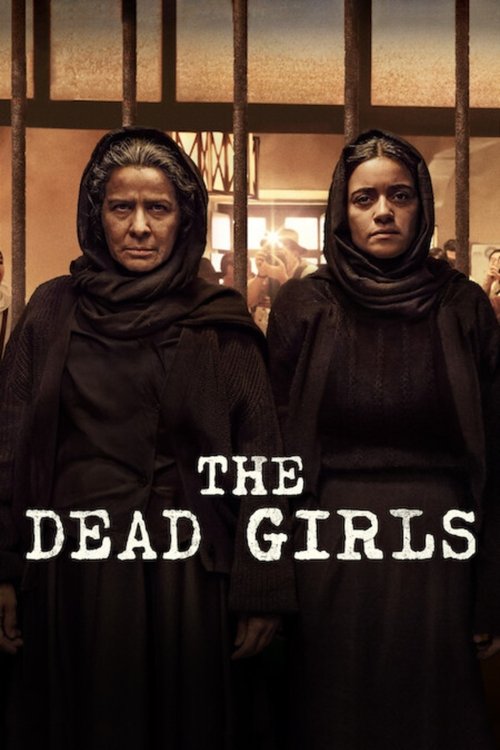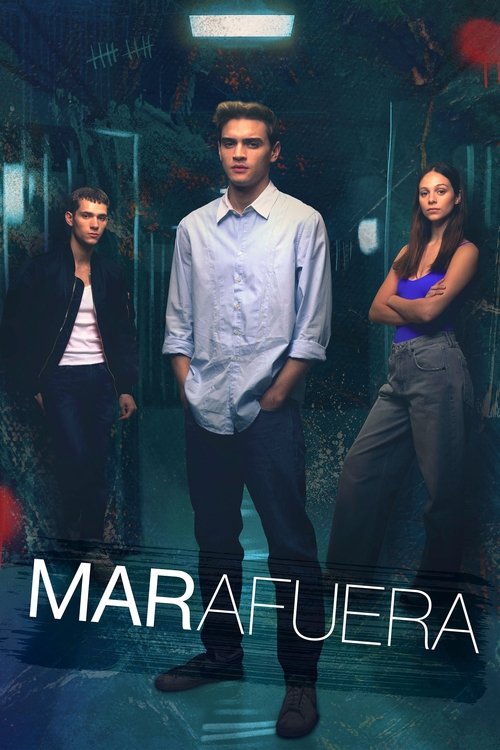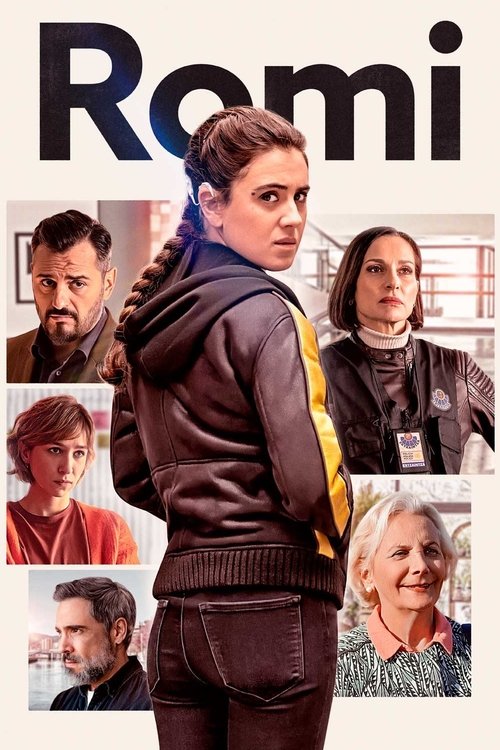
Ask Your Own Question
What is the plot?
The story begins in northern Argentina during a critical moment: the regional legislature is about to vote on a law regulating lithium mining, a resource of great economic and geopolitical importance. Governor Fernando Rovira is determined to stop the passage of this law because it threatens his interests and those of foreign corporations backing him. His mother, a powerful and manipulative figure, supports his efforts, while his right-hand man, Román Sabaté, appears loyal and instrumental in the political maneuvering.
Suddenly, Governor Rovira's twelve-year-old daughter, Zoe, disappears. The last time she is seen, she is in Román's car. Román then becomes unreachable, raising immediate suspicion. Rovira is thrown into chaos, forced to balance his political ambitions with the urgent need to find his daughter. The kidnapping is revealed to be orchestrated by Román himself, who uses Zoe as leverage to blackmail Rovira into supporting the lithium mining law, which Román actually wants to see passed.
As the search for Zoe intensifies, Rovira faces impossible choices: whether to yield to Román's demands, continue fighting the bill, or try to rescue his daughter by other means. The tension escalates as Román struggles with the complexities of the kidnapping, revealing that his motives are not purely political but tied to a deeper, older conspiracy.
The narrative then shifts back twelve years to show how Román first entered Rovira's inner circle. This flashback reveals Román's background, his initial relationship with Rovira, and the origins of the secret plot that has been unfolding for over a decade. It becomes clear that the kidnapping is only the surface of a much larger web of deceit, power struggles, and family secrets.
Throughout the series, the characters' motivations and loyalties are tested. Rovira's mother exerts pressure behind the scenes, pushing her son to prioritize political power over personal safety. Román's actions expose fractures within the governor's circle and hint at betrayals that have been hidden for years.
As the story progresses, the true identity of Zoe is called into question, adding another layer of complexity. The revelation of this secret shakes the foundation of the family and the political alliances surrounding them. The race against time to save Zoe becomes a race to uncover the truth about the past and the nature of power itself.
In the final episodes, confrontations between Rovira, Román, and other key players unfold step by step. The kidnapping, the political vote, and the family's dark history collide in a tense climax. The series closes with the resolution of the kidnapping crisis and the exposure of the 13-year-old conspiracy, revealing the curses of kinship and the limits of love and power in this fraught political landscape.
What is the ending?
At the end of Las maldiciones Season 1 (2025), the kidnapping of Governor Fernando Rovira's daughter, Zoe, by his trusted confidant Román Sabaté culminates in a tense confrontation that reveals deep betrayals and hidden motives. The kidnapping is exposed as a calculated move tied to a secret plot dating back 13 years, challenging Zoe's true identity. The governor faces a critical choice between political power and family loyalty as the lithium mining law vote approaches. Ultimately, the truth about Zoe's identity and Román's motives come to light, reshaping the relationships and power dynamics among the main characters.
The final episode, "Acto III: La maldición," unfolds with mounting pressure as the crucial votes for the lithium exploitation law dwindle. Governor Fernando Rovira is desperate to secure the law's passage, which would allow him to exploit local lithium reserves with backing from foreign corporations and his manipulative mother, who exerts strong influence behind the scenes.
The episode opens with Fernando discovering the true motive behind Román's kidnapping of Zoe. Román, once a loyal right-hand man, has taken Zoe captive to blackmail Fernando into supporting the law. This revelation shocks Fernando, forcing him to confront the betrayal by someone he trusted implicitly.
As the negotiation and search for Zoe intensify, the narrative reveals that the kidnapping is only the surface of a deeper conspiracy that began 13 years earlier. This secret plot casts doubt on Zoe's identity, suggesting she may not be who everyone believed. The tension escalates as Fernando grapples with the implications of this revelation, torn between his political ambitions and the love for his daughter.
The scenes progress with Fernando confronting Román, who remains silent about his full intentions but clearly uses Zoe as leverage. Meanwhile, Zoe's emotional state is portrayed with detail--her fear, confusion, and resilience as she endures captivity. The governor's mother, a powerful and cold figure, pushes Fernando to prioritize the law over his daughter's safety, highlighting the ruthless nature of political power.
In the climax, Fernando must decide whether to yield to Román's demands or risk losing both the law and his daughter. The episode closes with the truth about Zoe's identity fully unveiled, reshaping the understanding of kinship and loyalty among the characters.
Regarding the fates of the main characters at the story's end:
-
Fernando Rovira remains politically embattled but is forced to reconsider his priorities as the personal and political collide.
-
Zoe, the governor's daughter, survives the ordeal, though her true identity and the implications thereof leave her future uncertain.
-
Román Sabaté, the kidnapper and former confidant, is exposed as a complex figure driven by motives tied to the long-hidden secret, his fate tied to the resolution of the political crisis.
-
Fernando's mother continues to wield influence, embodying the cold, manipulative force behind the political machinations.
The ending emphasizes the intertwined nature of power, family, and betrayal, leaving the characters changed by the revelations and the consequences of their choices. The story closes its narrative arc while leaving open the possibility of further developments should the series continue.
Is there a post-credit scene?
For the TV show "Las maldiciones," season 1 (2025), there is no information available indicating the presence of a post-credit scene. The sources describing the show, its episodes, and details do not mention any post-credit or after-credits scenes for this series. The show is a political thriller drama released on Netflix with three episodes, focusing on a kidnapping and political conspiracy in Argentina, but no post-credit content is noted.
What is the significance of the secret 13-year-old conspiracy revealed in Season 1 of Las maldiciones?
The secret 13-year-old conspiracy uncovered during the kidnapping investigation casts doubt on the true identity of the governor's daughter and reveals hidden motives behind the kidnapping, deeply affecting the characters' trust and alliances.
How does the relationship between Román and Zoe develop and impact the plot in Season 1?
In Episode 2, the relationship between Román and Zoe is revealed to be crucial, adding complexity to the kidnapping plot and personal dynamics, though the series presents this development with subtlety that leaves some ambiguity about their true intentions and feelings.
What role does Lucrezia, the governor's wife, play in the unfolding events of Season 1?
Lucrezia, portrayed with a quiet seduction and emotional complexity, has a nuanced relationship with Román, the kidnapper, which hints at possible hidden feelings or alliances that influence the tension and character motivations throughout the season.
How does the kidnapping affect Governor Fernando Rovira's political ambitions and personal priorities?
The kidnapping of his daughter by his private secretary disrupts Governor Fernando Rovira's plans to pass a crucial lithium mining law, forcing him to balance his political greed with his daughter's safety, which drives much of the season's dramatic tension.
What is the nature of Irene's character and her influence on the story in Season 1?
Irene, characterized by a manipulative and puppet-master-like attitude, adds a layer of intrigue and tension, influencing key events and other characters' decisions, thereby enlivening the narrative despite the show's overall monotony.
Is this family friendly?
The TV miniseries Las maldiciones (2025) is not family friendly and is likely unsuitable for children or sensitive viewers due to its intense political thriller content involving kidnapping, corruption, and conspiracies.
Potentially objectionable or upsetting aspects include:
- Kidnapping and abduction scenes, which are central to the plot and may be distressing.
- Themes of political corruption, betrayal, and manipulation, which involve mature and dark subject matter.
- Tense and suspenseful thriller elements that create a serious and sometimes grim atmosphere.
- Possible depiction of violence or threats related to the kidnapping and political intrigue, though specific graphic details are not explicitly described in the sources.
Given these elements, Las maldiciones is best suited for mature audiences and not recommended for children or viewers sensitive to crime, political violence, or intense drama.


























